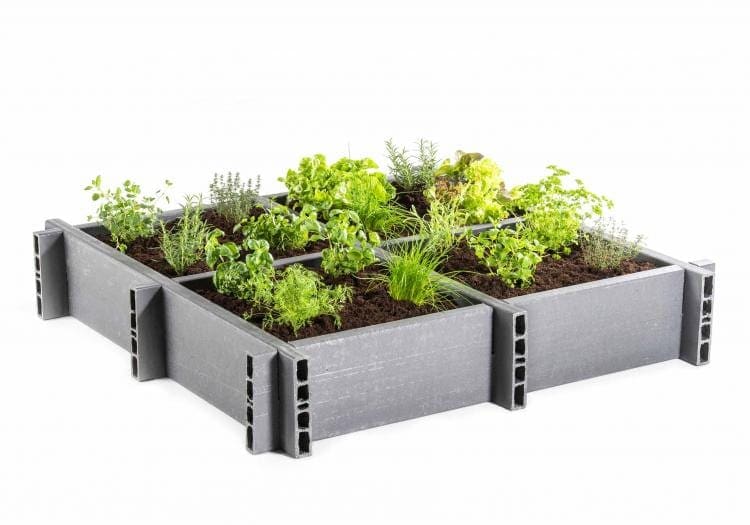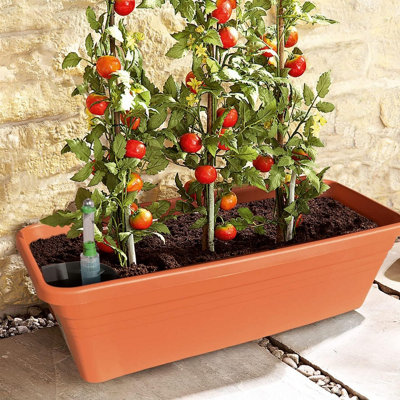Grow Your Own Food With These Veg Planters
Grow Your Own Food with These Veg Planters
Growing your own food is a rewarding experience that can save you money, improve your health, and connect you with nature. If you're short on space, veg planters are a great way to get started.
Veg planters come in all shapes and sizes, so you can find one that fits your needs and budget. Some popular options include:
- Raised beds: These are a great way to improve the drainage and aeration of your soil. They're also easy to weed and maintain.
- Containers: Containers are a versatile option that can be placed on patios, balconies, or even indoors. They're a good choice for people who don't have a lot of space.
- Vertical gardens: Vertical gardens are a great way to maximize space in small gardens. They're also a good option for people who have limited mobility.
No matter what type of veg planter you choose, there are a few things you'll need to do to get started:
- Choose the right location. Veg planters should be placed in a spot that gets at least 6 hours of sunlight per day.
- Prepare the soil. Veg planters need well-drained soil that is rich in nutrients. You can improve the quality of your soil by adding compost or manure.
- Plant your seeds or seedlings. Follow the instructions on the seed packet or seedling tag to determine the best time to plant and how deep to plant the seeds.
- Water your plants regularly. Veg plants need about 1 inch of water per week.
- Fertilize your plants. Veg plants need nutrients to grow and produce food. You can fertilize your plants with compost tea, manure, or a commercial fertilizer.
- Protect your plants from pests and diseases. Veg plants can be susceptible to pests and diseases. You can protect your plants by inspecting them regularly and taking steps to prevent pests and diseases from spreading.
With a little care and attention, you can grow a bountiful harvest of fresh vegetables in your veg planter.
Here are some additional tips for growing your own food in veg planters:
- Choose the right plants for your climate. Some plants are more suited to certain climates than others. Do some research to find out which plants will thrive in your area.
- Start small. If you're new to gardening, it's a good idea to start small. This will help you learn the basics of gardening and avoid getting overwhelmed.
- Be patient. It takes time for plants to grow and produce food. Don't get discouraged if you don't see results immediately.
- Have fun! Growing your own food is a fun and rewarding experience. Enjoy the process and savor the taste of your homegrown vegetables.
Are you looking for a great veg planter? Look no further than Garden Wiki! They have a wide variety of planters to choose from, in all shapes, sizes, and materials. Whether you're looking for a traditional terracotta planter or a more modern fiberglass planter, they have something for everyone.
In addition to their wide selection, Garden Wiki also offers great customer service. If you have any questions about their products, their friendly and knowledgeable staff is always happy to help.
So what are you waiting for? Visit Garden Wiki today to find the perfect veg planter for your home!
FAQ of veg planter
1. What is a veg planter?
A veg planter is a container that is specifically designed for growing vegetables. It typically has a deep, well-drained soil medium and a water reservoir to help keep the plants hydrated. Veg planters come in a variety of shapes, sizes, and materials, so there is one that is perfect for every home gardener.
2. What are the benefits of using a veg planter?
There are many benefits to using a veg planter, including:
- Convenience: Veg planters can be placed anywhere, even indoors, so you can grow vegetables even if you don't have a lot of outdoor space.
- Control: You can control the soil, water, and fertilizer in a veg planter, which can help you grow healthier, more productive plants.
- Variety: There are a wide variety of vegetables that can be grown in veg planters, so you can enjoy fresh, homegrown produce all year long.
3. What are the different types of veg planters?
There are many different types of veg planters available, including:
- Plastic planters: Plastic planters are lightweight and affordable, making them a good option for budget-minded gardeners.
- Terracotta planters: Terracotta planters are porous, which helps to promote drainage. They are also a good choice for plants that need a lot of sun and air circulation.
- Wood planters: Wood planters are durable and can add a touch of rustic charm to your garden. However, they can be more difficult to maintain than other types of planters.
- Concrete planters: Concrete planters are very durable and can last for many years. They are also a good choice for plants that need a lot of weight to keep them stable.
4. How do I choose the right veg planter for my needs?
When choosing a veg planter, there are a few factors you need to consider, including:
- The size of your plants: Veg planters come in a variety of sizes, so you need to choose one that is big enough for your plants to grow comfortably.
- The type of plants you want to grow: Some plants, such as tomatoes, need a lot of space to grow, while others, such as herbs, can be grown in smaller planters.
- The location of your planter: If you plan to place your planter indoors, you need to choose one that is made of a material that is resistant to moisture.
- Your budget: Veg planters can range in price from a few dollars to several hundred dollars. Choose one that fits your budget and your needs.
5. How do I care for my veg planter?
To care for your veg planter, you need to:
- Water your plants regularly: The frequency of watering will depend on the type of plants you are growing and the climate in your area.
- Fertilize your plants: Fertilize your plants every few weeks with a balanced fertilizer.
- Control pests and diseases: Monitor your plants for pests and diseases and take steps to control them as soon as possible.
- Repot your plants as needed: As your plants grow, you may need to repot them into a larger planter.
Image of veg planter
- Wooden raised bed planter: This is a classic type of veg planter that is made from wood. It is a good choice for vegetable gardens because it is durable and can be easily customized.
- Pallet planter: This is a more budget-friendly option that is made from recycled pallets. Pallet planters are a great way to get creative with your garden design.

- Plastic planter: This is a lightweight and easy-to-move option that is made from plastic. Plastic planters are a good choice for vegetable gardens that are located in areas with harsh weather conditions.

- Concrete planter: This is a more durable option that is made from concrete. Concrete planters are a good choice for vegetable gardens that are located in areas with high foot traffic.

- Terracotta planter: This is a traditional type of veg planter that is made from terracotta. Terracotta planters are a good choice for vegetable gardens that are located in areas with warm climates.

Post a Comment for "Grow Your Own Food With These Veg Planters"